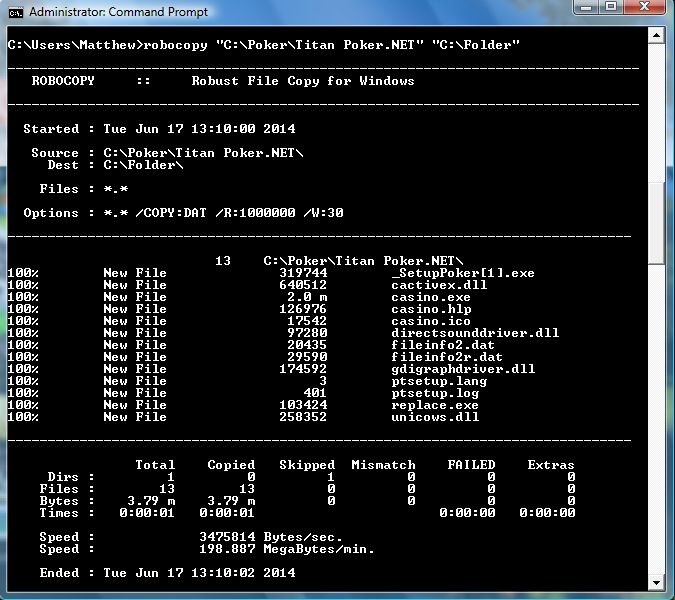

Just keep in mind that if you specify the job to stop after running for a certain amount of hours, Windows Scheduler will stop only the batch script, but the Robocopy process will keep running. You can put it in a batch script and schedule using Windows Scheduler. Robocopy is typically scheduled to run at certain times of the day, preferably after hours. If you don’t exclude the System Volume Information folder, you may end up copying deduplication and DFSR data, which in addition to wasting disk space, will break these features on the destination server. /XD “System Volume Information” is useful if you’re copying an entire volume.

/COPYALL and /DCOPY:T will copy all file and directory attributes, permissions, as well as timestamps.It’s important for the final data synchronisation, but for data seeding I recommend one retry and one second wait to avoid unnecessary delays. Default behaviour is to keep retrying until the file is unlocked. /R:1 and /W:1 – Robocopy doesn’t copy locked files to avoid data inconsistencies.If you’re dealing with lots of small files, this can significantly improve performance.


It comes with every Windows Server installation and starting from Windows Server 2008 supports multithreading.īelow are the command line options I use: But if you don’t have any special requirements, such as data at transit encryption, Robocopy is probably the simplest tool to use. I’m sure there are plenty of tools that can perform this task accurately and efficiently. If you want to replicate all NTFS and share-level permissions consistently from source to destination, scripting is almost the only way to go. Doing it manually is almost impossible, unless you have only a handful of shares. Every such migration involves copying data and recreating shares. There are many use cases, it can be migration from a NAS storage array to a Windows Server or between an on-premises file server and cloud. I don’t usually blog about Windows Server and Microsoft products in general, but the need for file server migration comes up in my work quite frequently, so I thought I’d make a quick post on that topic.


 0 kommentar(er)
0 kommentar(er)
